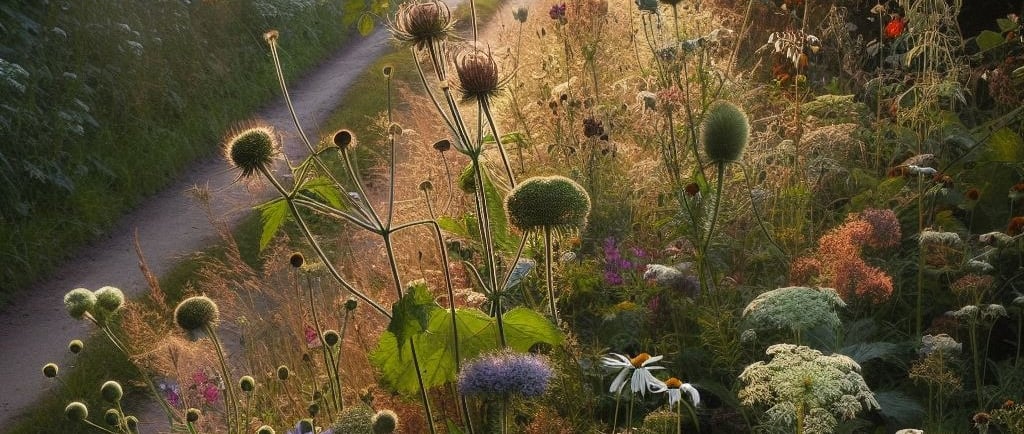Weeds/Wildflowers of Wold Newton
Wold Newton's abundance of flora that permeates the lanes and embankments around the village
FEATUREDWOLD NEWTON


Since our relocation to the fare leas and buttes of Wold Newton, just over two years’ ago now, it has become increasingly apparent that the range and abundance of flora that permeates the lanes and embankments around the village is rather striking.
Each season heralds its own flower in these parts, whether it’s the snowdrop or hellebore of winter and spring, or the geranium and erigeron of summer and autumn. Indeed, one can see a variety of recurrent arrays promoting their distinct form and hue throughout each period of the year. Yet for each variety, cultivar, or assembled display, there is a multitude of weeds/wildflowers that strenuously strive to eke out a shared living with these fashioned blooms. Some sway coyly amidst the crops and cereals that stretch away from the village; others brave the verges of tracks and paths, peeking and poking through any practicable crevice. But when one comes to think of it – what actually constitutes a weed or a wildflower and what is the distinction between each?
It has been suggested by certain commentators that weeds are simply wild plants growing in the wrong place. Yet during the many strolls shared and relished over the past two years, my wife and I have acquired the impression that very few plants ought to be considered growing in the wrong place, especially when found in a small village in the countryside. It can be claimed that a bunch of dandelions or daisies strewn across a prize-winning lawn, or a family of nettles forging their residence amongst a refined border might perhaps constitute a horticultural faux pas. But however dubitable this may be, we find it hard to acquiesce to such conventions and take solace in the beauty of each and every plant, no matter where its location.
It would be encouraging to think that these weeds/wildflowers might be cultivated to an extent, but then, would such plants still be considered wild or weeds? Either way, the colours, aromas and structures of these plants purvey a true sense of style and serenity.
Many common weeds/wildflowers are found around Wold Newton, but there are a few that are less common and which warrant a mention. Fox and Cubs (Pilosella aurantiaca) can be seen briefly in summer along the verges near the church, their small orange dandelion-like flowers shimmering in the sunshine and providing a heavenly haven for bees. A small clan of Welsh Poppies (Meconopsis cambric) inhabit near the public footpath leading to Front Street and brandish their large 4-petalled yellow flowers throughout spring and summer. Moreover, a rare delight that is the Weasel’s Snout (Misopates orontium) resides freely amongst the grasses in the fields towards Fordon. But of all the dazzling flowers encountered during our rambles around Wold Newton, the sight in late June of a single Pyramidal Orchid (Anacamptis pyramidalis) stretching its little head heroically from amongst the hedgerow, thrusting and flaunting its delicate pink flowers, triumphed all.
There is a plethora of plants still waiting to be discovered throughout each season around Wold Newton and the surrounding area, and each day we relish the prospect to seek and unearth further delights. How many different weeds/wildflowers can you find around your village through the seasons?
By Paul & Shan, Wold Newton
